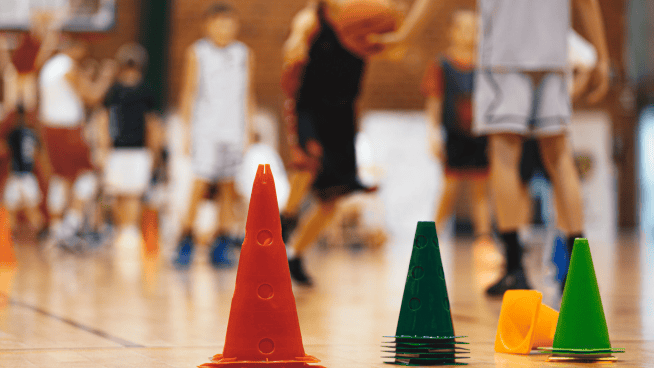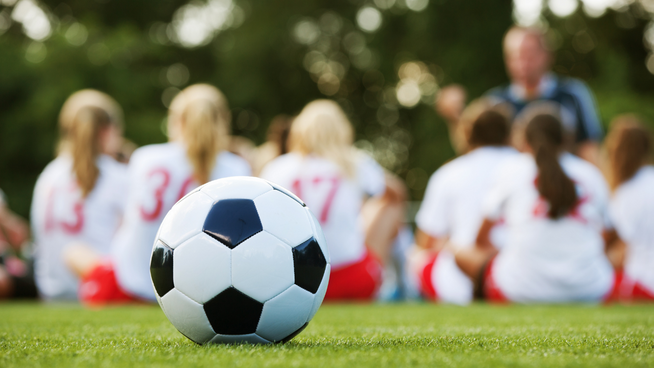How to Build a Balanced Body to Withstand Intensity in Sports
First things first, understand the more you compound force and intensity on top of misalignment, dysfunctional movement, poor stability, or imbalance, it leads to strain or injury. So, you need a balanced body if you generate high force and intensity in your strength training or sports performance. Balance is essential in force production because it transfers forces properly.
Understand, an imbalanced body is like a crack in the wall. The more tension you place on the crack, the bigger the crack becomes. Finally, the wall crumbles when it cannot sustain any more tension. And the same goes for your body. As force and intensity go up, a balanced body will sustain those forces best.
Here are some tips for developing a balanced body.
Avoid Individually Training Muscles
You must break away from the stereotypical training and thinking of bodybuilding. Training individual muscles produce strength. However, just because it creates strength, you must understand how that strength will function and interact with your body and movement.
For example, just doing bench presses without training your back will cause your shoulders to round forward. As a result, you strengthen your chest but not your back, causing an imbalance in tension and force. Unfortunately, this leads to poor shoulder alignment and stability. And poor stability leads to poor shoulder mobility. Consequently, the force you place on top cannot be sustained.
What you need to realize is that your back muscles are critical in your pressing movements for your chest and shoulders. In addition, your mid-back muscles help to maintain correct posture. By balancing your strength, your joints, muscles, and body can better withstand intensity and force.
Find the Weak Links
Strengthen your weakness because it is the vulnerability to your strength. Think in terms of a chain. If a chain link is broken or severed, it weakens the chain’s strength. Your body functions similarly when it comes to this idea; it is all connected. For example, to improve mobility, you need stability and alignment. To run faster, the right and left legs must be equally strong.
Many times, to enhance strength, speed, and power, to generate more force, it is not about moving more weight or running as fast as you can. It is about looking at functionality first. For example, stability is a big problem for athletes. And it is the limiting factor that prevents them from getting stronger and faster. Strength, speed, and power go higher by simply developing balance and stability. As a result, you can also jump higher and run faster.
So, don’t just look at numbers when finding the weak link. Look at your functional status and aspects like alignment and stability. They usually are the answers to weaknesses. However, something as simple as stability is most often overlooked and essential to quickly boost your strength and power. Stability is the indicator for the nervous system to increase force. Without stability, the CNS diminishes your force rate.
Learn to Breath
Breathing correctly is essential to increase force and intensity. A good portion of your force comes from breathing. And again, something so simple that it is highly effective is overlooked. When you inhale, it increases the stability of your core and abdominals, which reciprocates stability to your spine. And when you exhale hiss, your core stability increases because the movement’s concentric part produces and moves the force.
How you breathe is crucial to force production. And if you do it correctly, you will boost your strength, speed, power, and reps! When you strengthen your inhalation and exhalation, everything gets better and stronger; therefore, you can generate more force and sustain more intensity.
Unilateral Training
If you are weak on one leg, the force production and intensity of jumping, sprinting, and running will be diminished. For example, running and sprinting are the transference of force from left to right. Let’s say, for example, you push off the right foot with a lot of force, and the left leg cannot sustain the force the right side produces. The effect will be similar to downshifting your car each time you transfer force from right to left.
Therefore, what your right leg can do, your left needs to do, sustain and transfer back. Doing single-leg squats and deadlifts can help develop their force rate individually.
Agonist Antagonist Training
Agonist and antagonist training is one of the most effective methods to develop strength. Again, get away from the resistance training and bodybuilding ideas and think neuromuscular. For example, you must pull the arm down when you reach up. If you bend and lift your knee, you must straighten it and pull it down. When you punch, you must pull your arm back quickly again.
Agonist antagonist training develops the appropriate strength through neuromuscular patterns to optimize your strength, speed, and power. So doing back rows with bench presses, pull-ups with shoulder presses, etc., will produce greater strength and force production through balance.
Following these techniques will lead to more balance in your training. When you have balance, strength, speed, and power, go up quickly. And you will be better adept at your sport. Furthermore, you will prevent injury and strain.
How you train will turn your body into graphene, carbon, or titanium. Graphene can withstand the most force, tension, and intensity. As Professor Hone from Columbia University said, an elephant balanced on a pencil will break through a sheet of graphene that has the thickness of Saran Wrap.
So, think about strengthening your balance to be like graphene, not your muscles, to withstand intensity and force.
Check out the book INSTANT STRENGTH for more info about strength, speed, power, and explosive training.
Or, to see more great videos to develop your sport and training, watch the BALANCED BODY channel.
RECOMMENDED FOR YOU
How to Build a Balanced Body to Withstand Intensity in Sports
First things first, understand the more you compound force and intensity on top of misalignment, dysfunctional movement, poor stability, or imbalance, it leads to strain or injury. So, you need a balanced body if you generate high force and intensity in your strength training or sports performance. Balance is essential in force production because it transfers forces properly.
Understand, an imbalanced body is like a crack in the wall. The more tension you place on the crack, the bigger the crack becomes. Finally, the wall crumbles when it cannot sustain any more tension. And the same goes for your body. As force and intensity go up, a balanced body will sustain those forces best.
Here are some tips for developing a balanced body.
Avoid Individually Training Muscles
You must break away from the stereotypical training and thinking of bodybuilding. Training individual muscles produce strength. However, just because it creates strength, you must understand how that strength will function and interact with your body and movement.
For example, just doing bench presses without training your back will cause your shoulders to round forward. As a result, you strengthen your chest but not your back, causing an imbalance in tension and force. Unfortunately, this leads to poor shoulder alignment and stability. And poor stability leads to poor shoulder mobility. Consequently, the force you place on top cannot be sustained.
What you need to realize is that your back muscles are critical in your pressing movements for your chest and shoulders. In addition, your mid-back muscles help to maintain correct posture. By balancing your strength, your joints, muscles, and body can better withstand intensity and force.
Find the Weak Links
Strengthen your weakness because it is the vulnerability to your strength. Think in terms of a chain. If a chain link is broken or severed, it weakens the chain’s strength. Your body functions similarly when it comes to this idea; it is all connected. For example, to improve mobility, you need stability and alignment. To run faster, the right and left legs must be equally strong.
Many times, to enhance strength, speed, and power, to generate more force, it is not about moving more weight or running as fast as you can. It is about looking at functionality first. For example, stability is a big problem for athletes. And it is the limiting factor that prevents them from getting stronger and faster. Strength, speed, and power go higher by simply developing balance and stability. As a result, you can also jump higher and run faster.
So, don’t just look at numbers when finding the weak link. Look at your functional status and aspects like alignment and stability. They usually are the answers to weaknesses. However, something as simple as stability is most often overlooked and essential to quickly boost your strength and power. Stability is the indicator for the nervous system to increase force. Without stability, the CNS diminishes your force rate.
Learn to Breath
Breathing correctly is essential to increase force and intensity. A good portion of your force comes from breathing. And again, something so simple that it is highly effective is overlooked. When you inhale, it increases the stability of your core and abdominals, which reciprocates stability to your spine. And when you exhale hiss, your core stability increases because the movement’s concentric part produces and moves the force.
How you breathe is crucial to force production. And if you do it correctly, you will boost your strength, speed, power, and reps! When you strengthen your inhalation and exhalation, everything gets better and stronger; therefore, you can generate more force and sustain more intensity.
Unilateral Training
If you are weak on one leg, the force production and intensity of jumping, sprinting, and running will be diminished. For example, running and sprinting are the transference of force from left to right. Let’s say, for example, you push off the right foot with a lot of force, and the left leg cannot sustain the force the right side produces. The effect will be similar to downshifting your car each time you transfer force from right to left.
Therefore, what your right leg can do, your left needs to do, sustain and transfer back. Doing single-leg squats and deadlifts can help develop their force rate individually.
Agonist Antagonist Training
Agonist and antagonist training is one of the most effective methods to develop strength. Again, get away from the resistance training and bodybuilding ideas and think neuromuscular. For example, you must pull the arm down when you reach up. If you bend and lift your knee, you must straighten it and pull it down. When you punch, you must pull your arm back quickly again.
Agonist antagonist training develops the appropriate strength through neuromuscular patterns to optimize your strength, speed, and power. So doing back rows with bench presses, pull-ups with shoulder presses, etc., will produce greater strength and force production through balance.
Following these techniques will lead to more balance in your training. When you have balance, strength, speed, and power, go up quickly. And you will be better adept at your sport. Furthermore, you will prevent injury and strain.
How you train will turn your body into graphene, carbon, or titanium. Graphene can withstand the most force, tension, and intensity. As Professor Hone from Columbia University said, an elephant balanced on a pencil will break through a sheet of graphene that has the thickness of Saran Wrap.
So, think about strengthening your balance to be like graphene, not your muscles, to withstand intensity and force.
Check out the book INSTANT STRENGTH for more info about strength, speed, power, and explosive training.
Or, to see more great videos to develop your sport and training, watch the BALANCED BODY channel.










